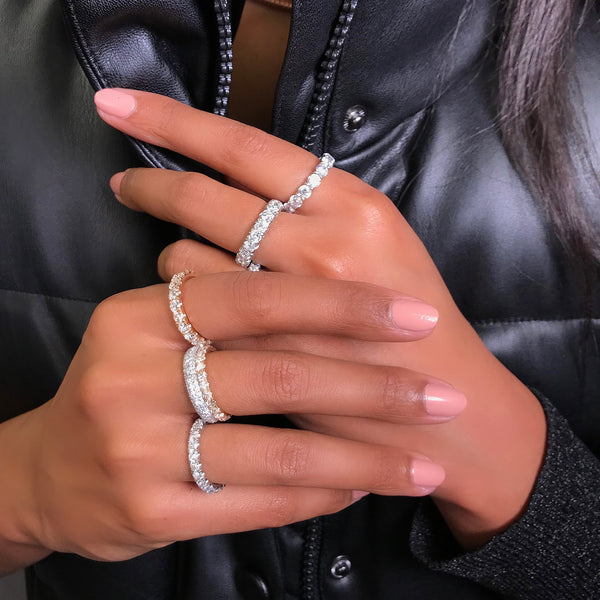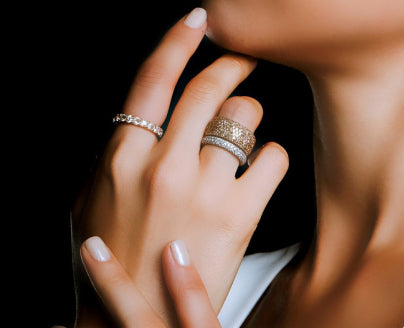
Engagement Ring Finger
The tradition of wearing your engagement ring on the fourth finger of the left hand dates back to the Roman Empire. Ancient Romans believed this finger had a vein that ran directly to the heart. While this tradition remains, etiquette has softened considerably, and engagement rings can be worn on either hand.
History Of The Engagement Ring
Engagement rings are one of the most recognizable symbols of committed love in the Western world, but where did this tradition start? While engagement rings have always been presented to prospective brides shortly after a marriage proposal, the history of these iconic rings is rich.
According to the American Gem Society, the very first engagement ring that we would recognize as such was commissioned in 1477, by Archduke Maximillian of Austria. The ring was made for his betrothed, Mary of Burgundy, and quickly caught on among many aristocratic and noble European courts.
During the Victorian and Edwardian ages, wealthy families popularized intricate ring settings and styles, which often combined different gemstones and precious metals. These rings were often set in the shape of flowers, and gained the name “posey rings.”
It was not until 1947 in North America that diamonds became THE stone for those getting engaged. De Beers, the world's leading diamond company, with unrivalled expertise in the exploration, mining and marketing of rough diamonds driving created an advertising campaign still relevant today. That year, De Beers launched its timeless “a diamond is forever” slogan that won the hearts and wallets of many young American men. Within three years of the campaign, the waning diamond market grew by 50%, and has remained a wildly popular engagement ring choice ever since.
Which Finger Should I Wear My Engagement Ring?
Traditionally, in America, people wear their engagement ring on the fourth finger of their left hand, but this etiquette has softened over the years. For example, if you’re left handed, you may prefer to wear your engagement ring on the fourth finger of your right hand. However if you reside in other countries such as Russia, Germany, Norway and India, engagement rings are worn on the right hand. The reason? The word “left” translates to “sinister” in Latin and was considered unlucky.
Why Does Your Engagement Ring Go On Your Left Hand?
The tradition of wearing your engagement ring on your left hand dates back to the Roman Empire. Ancient Romans believed that the fourth finger on the left hand had a vein that ran directly to the heart - the “Vena Amoris,” or Vein of Love. Wearing an engagement ring on this so-called love line became customary, and the tradition lived on. Today, we know that such a vein doesn’t exist, but the sentiment has made this tradition timeless.
Can I Wear My Engagement Ring On My Right Hand?
While wearing your engagement ring on your right hand is a less conventional option, it’s totally acceptable to do. You may choose to wear your engagement ring on your right hand for a number of reasons! While Western tradition is to wear this ring on your left hand, the choice is subjective.
How Do I Wear My Engagement Ring With My Wedding Band?
The engagement and wedding rings are traditionally worn together on your left ring finger. The wedding ring is conventionally worn at the base of your finger with the engagement ring on top. The wedding ring is worn on the bottom because it’s closest to your heart!
That being said, some women wear their engagement ring closest, while others wear one ring on the ring finger of each hand. Ultimately, how you wear your engagement and wedding ring is a matter of personal preference and style.
Discover custom, not customary fine jewelry, designed and expertly crafted for you
David Alan is a New York City based custom fine jewelry atelier with an incredible reputation for capturing and translating your raw emotion and passion into a beautifully balanced, and distinctly unique design. Every part of your David Alan experience contributes to a jewel so personal, it becomes your signature, your talisman, and your future heirloom. Start your journey now.
Engage in a complimentary virtual consultation with David Alan, today!

